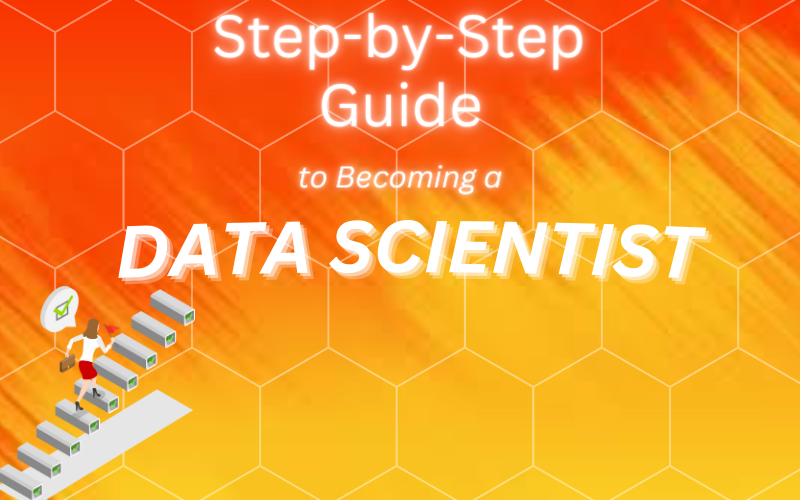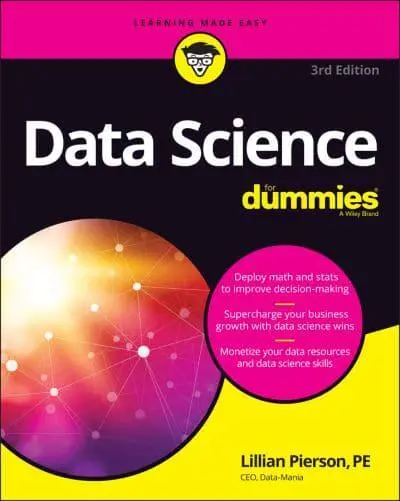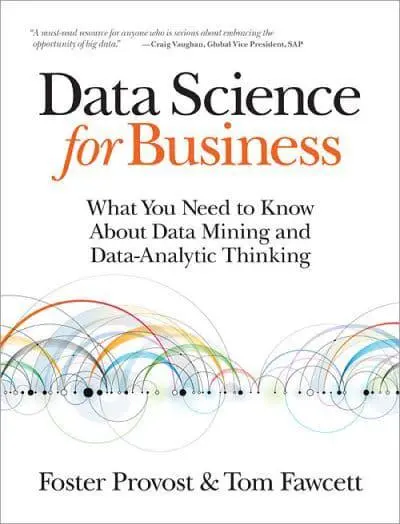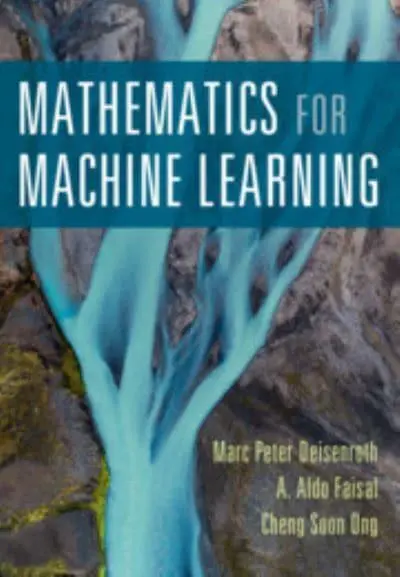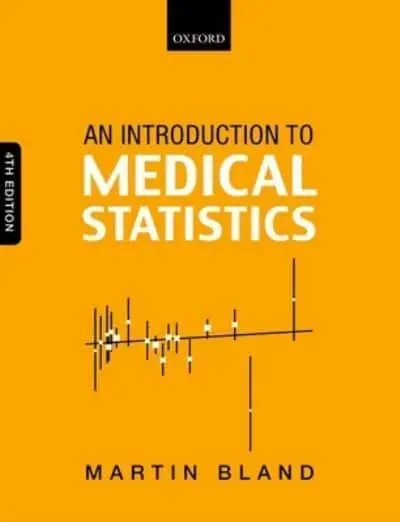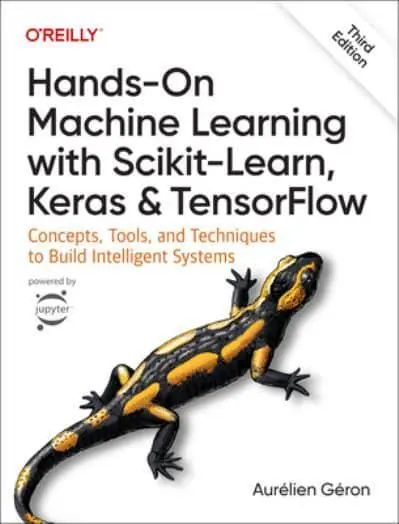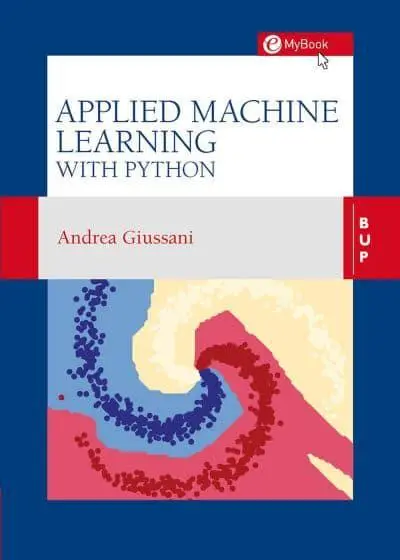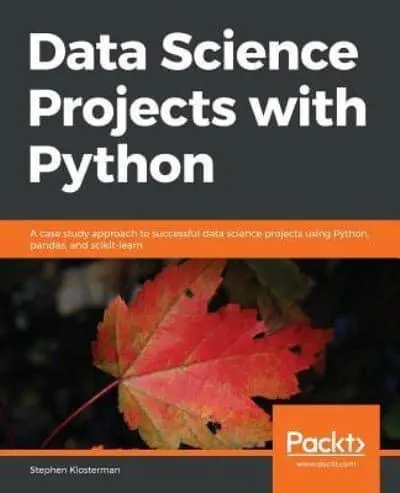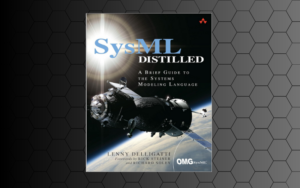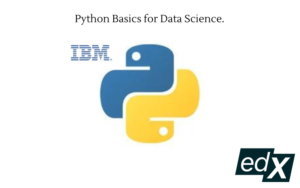Are you aspiring to become a data scientist? you don’t know where to start with learning Data Science? This comprehensive step-by-step guide will help you navigate through the learning path to acquire the necessary skills and knowledge. We have collated a set of recommended courses and textbooks to support your journey.
Table of Contents
Why Become a Data Scientist?
High Demand and Attractive Salaries
Data science is one of the fastest-growing fields in the technology sector. Companies across various industries are increasingly relying on data-driven decision-making, leading to a high demand for skilled data scientists. This demand translates into competitive salaries and numerous job opportunities. According to the U.S. Bureau of Labor Statistics, employment of data scientists is projected to grow much faster than the average for all occupations.
Versatility and Impact
Data scientists work in diverse fields such as healthcare, finance, retail, and technology. They analyze complex data sets to derive actionable insights that can significantly impact business strategies, healthcare treatments, financial planning, and more. The versatility of the role allows data scientists to choose from a wide range of industries and roles.
Problem-Solving and Innovation
Data scientists tackle challenging problems and leverage advanced analytical techniques to solve real-world issues. This involves working with big data, machine learning, and artificial intelligence, fostering an environment of continuous learning and innovation. Data scientists are at the forefront of technological advancements, making meaningful contributions to their organizations and society.
Personal and Professional Growth
The field of data science offers continuous opportunities for personal and professional development. With the rapid evolution of technology, data scientists must stay updated with the latest tools and methodologies, ensuring lifelong learning. This dynamic nature of the job keeps it exciting and rewarding.
Overview of the Steps to Becoming a Data Scientist
Journey to become a data scientist involves several key steps. Here’s an overview of the process:
Step 1: Understand the Basics: Gain a foundational understanding of what data science is, the role of a data scientist, and various applications of data science in different fields.
Step 2: Essential Mathematics and Statistics: Learn crucial mathematical concepts such as linear algebra, calculus, and probability, which are essential for understanding and applying data science algorithms and techniques.
Step 3: Data Analysis and Visualization: Develop skills in data manipulation and analysis using tools like Pandas, and learn how to create compelling visualizations with libraries like Matplotlib and Seaborn to communicate insights effectively.
Step 4: Machine Learning Basics: Understand the core concepts of machine learning, including supervised and unsupervised learning, and gain practical experience in building and evaluating predictive models using libraries such as Scikit-Learn.
Step 5: Deep Dive into Specific Areas: Explore advanced topics in data science such as deep learning, big data technologies, and cloud computing, allowing you to handle complex data problems and large datasets effectively.
Step 6: Practical Projects and Portfolio Building: Apply your knowledge through hands-on projects to build confidence and demonstrate your skills, and create a professional portfolio to showcase your work to potential employers.
Step 7: Continuous Learning and Networking: Stay updated with the latest trends and technologies in the rapidly evolving field of data science, and build a professional network to collaborate, learn, and advance your career.
Each of these steps builds on the previous one, ensuring a comprehensive learning.
Step 1: Understand the Basics
a) Introduction to Data Science
Understanding the fundamentals of data science is crucial for grasping the overall landscape of the field, the role of a data scientist, and the various problems they solve, providing a strong foundation for further learning.
Recommended Resources:
Introduction to Data Science
Learn about the world of data science first-hand from real data scientists.
Reason for Selection: This course offers a structured introduction to the field of data science, covering key concepts, methodologies, and tools used by data scientists. It provides a comprehensive overview that is essential for beginners.
Outcome: Learners will gain a solid understanding of what data science entails, the types of problems data scientists solve, and the various stages of a data science project. This foundational knowledge will prepare them for more advanced topics and practical applications.
Data Science for Dummies
Not sure what data science is yet? Don’t worry! Parts 1 and 2 of Data Science For Dummies will get all the bases covered for you.
Reason for Selection: This book is designed to simplify complex concepts and make data science accessible to beginners. It uses easy-to-understand language and real-world examples to explain fundamental ideas.
Outcome: Readers will become familiar with basic data science terminology and concepts. The approachable format helps demystify data science, making it easier for learners to grasp the essentials and build confidence in their understanding.
Data Science for Business
This book provides a comprehensive introduction to data science, emphasizing the importance of data-analytic thinking for business decision-making.
Reason for Selection: This book provides a business-oriented perspective on data science, emphasizing the application of data science techniques to solve real business problems. It bridges the gap between technical knowledge and practical business applications.
Outcome: Learners will understand how data science is applied in business contexts to drive decision-making and solve strategic problems. This resource helps highlight the value of data science in a practical, business environment, making the knowledge more relevant and actionable.
Overall Outcome for Introduction to Data Science: By utilizing these resources, learners will develop a comprehensive understanding of the fundamentals of data science, including its role, applications, and methodologies. They will be well-prepared to dive deeper into the field, equipped with the knowledge needed to tackle more complex topics and practical challenges in data science.
b) Learn Programming
Learning programming is the foundational step in your journey to becoming a data scientist. Proficiency in programming languages such as Python or R is essential, as these languages are widely used in the field of data science for data manipulation, analysis, and visualization. Here’s how you can start:
Recommended Resources:
Python Basic for Data Science
This “Python Basics for Data Science” course on edX is a comprehensive, beginner-friendly program designed to equip you with the essential Python skills needed in data science.
Reason for Selection: This course offers a comprehensive introduction to Python, specifically tailored for data science applications. It covers fundamental programming concepts and provides practical exercises relevant to data manipulation and analysis.
Outcome: Learners will gain a solid understanding of Python syntax and basic programming constructs, enabling them to write simple programs and perform essential data science tasks. This foundation will support further learning and application in more complex data science projects.
Data Science R Basic
Learn the basic R programming skills necessary for working with data. Build a foundation in R and learn how to wrangle, analyze, and visualize data.
Reason for Selection: This resource introduces R, another powerful programming language widely used in data science, particularly in academic and research settings. It focuses on basic R programming skills and their application to data science.
Outcome: Learners will become familiar with R syntax and basic programming principles, enabling them to manipulate and analyze data using R. This dual-language proficiency (Python and R) broadens their toolkit, making them versatile data scientists.
Python for Dummies
Python All-in-One For Dummies is your one-stop source for answers to all your Python questions.
Reason for Selection: This book is designed to make learning Python easy and accessible, using clear explanations and practical examples. It covers the basics of Python programming in a user-friendly manner.
Outcome: Readers will gain confidence in their ability to write Python code, understand programming logic, and apply Python to various tasks. The approachable style helps build a strong programming foundation, essential for advancing in data science.
R All in One for Dummies
R All-in One , a deep dive into the programming language of choice for statistics and data.
Reason for Selection: This comprehensive guide covers multiple aspects of R programming, from basic syntax to advanced data analysis techniques. It is designed to be an all-inclusive resource for learners at different levels.
Outcome: Learners will develop a thorough understanding of R programming and its applications in data science. The book’s extensive coverage ensures that learners can progress from basic to advanced R skills, supporting their growth as competent data scientists.
Overall Outcome for Learn Programming: By utilizing these resources, learners will develop proficiency in both Python and R programming languages. They will gain the necessary skills to manipulate, analyze, and visualize data, forming a strong foundation for their data science journey. Mastery of these programming languages will enable them to tackle more advanced data science tasks and projects, essential for a successful career in the field.
Step 2: Essential Mathematics and Statistics
a) Mathematics for Data Science
A solid grasp of linear algebra and calculus is necessary for understanding many data science algorithms and techniques, particularly in machine learning and deep learning, providing the mathematical foundation needed for advanced topics.
Recommended Resources:
Math for Machine Learning with Python
Learn the essential mathematical foundations for machine learning and artificial intelligence.
Reason for Selection: This course provides a comprehensive introduction to the mathematics essential for machine learning, including linear algebra, calculus, and probability, all contextualized within Python.
Outcome: Learners will develop a strong mathematical foundation in the core concepts used in machine learning, enabling them to understand and implement algorithms effectively.
Linear Algebra – Foundations to Frontiers
Learn the mathematics behind linear algebra and link it to matrix software development.
Reason for Selection: This course offers an in-depth exploration of linear algebra, a fundamental area of mathematics in data science. It covers vectors, matrices, and linear transformations in great detail.
Outcome: Participants will gain a thorough understanding of linear algebra, allowing them to manipulate and work with high-dimensional data and apply these techniques in various data science tasks.
Mathematics for Machine Learning
Python All-in-One For Dummies is your one-stop source for answers to all your Python questions.
Reason for Selection: This book is designed to bridge the gap between mathematical theory and practical applications in machine learning. It covers essential topics like linear algebra, calculus, and probability.
Outcome: Readers will be equipped with the necessary mathematical skills to understand the underlying principles of machine learning algorithms and apply them to solve real-world problems.
Introduction to Numerical Linear Algebra
Learn the mathematics behind linear algebra and link it to matrix software development.
Reason for Selection: This resource focuses on the numerical aspects of linear algebra, crucial for implementing efficient algorithms and handling large datasets in data science.
Outcome: Learners will acquire practical skills in numerical methods, enabling them to solve complex linear algebra problems computationally, which is vital for data processing and machine learning tasks.
Overall Outcome for Mathematics for Data Science: By utilizing these resources, learners will build a robust mathematical foundation essential for data science. They will understand the core mathematical concepts and techniques that underpin many data science algorithms and methods, particularly in machine learning and deep learning. This foundation will enable them to tackle advanced topics and complex problems with confidence.
b) Statistics and Probability
Knowledge of statistics and probability is essential as they are the backbone of data analysis and machine learning, enabling you to make inferences from data, understand data distributions, and validate models effectively.
Recommended Resources:
Statistics and Data Science
Master the foundations of data science, statistics, and machine learning. Analyze big data and make data-driven predictions through probabilistic modeling and statistical inference.
Reason for Selection: This course provides a broad overview of statistical methods and their applications in data science. It covers key topics such as hypothesis testing, regression analysis, and data visualization.
Outcome: Learners will gain a solid understanding of basic statistical concepts and how to apply them to analyze data, making informed decisions based on statistical inference.
Data Science: Probability
Learn probability theory — essential for a data scientist — using a case study on the financial crisis of 2007-2008.
Reason for Selection: This course focuses specifically on probability theory and its importance in data science. It covers essential concepts like random variables, probability distributions, and the law of large numbers.
Outcome: Participants will develop a deep understanding of probability, which is crucial for modeling uncertainty and variability in data, thereby enhancing their ability to build and interpret statistical models.
Probability and Statistical Inference
This applied introduction to probability and statistics reinforces basic mathematical concepts with numerous real-world examples and applications to illustrate the relevance of key concepts.
Reason for Selection: This textbook offers a comprehensive introduction to both probability and statistical inference, with a strong focus on theory and practical applications.
Outcome: Readers will learn to make predictions and decisions based on data, using probability models and inferential techniques to draw valid conclusions.
A First Course in Statistical Learning
Understand machine learning algorithms and how they are applied to data science problems.
Reason for Selection: This book bridges the gap between statistical theory and practical applications in data science, covering essential topics in statistical learning and their implementation.
Outcome: Learners will acquire the skills to apply statistical learning techniques to real-world data, improving their ability to analyze complex datasets and develop predictive models.
An Introduction to Statistics with Python
This book provides an introduction to Python and its use for statistical data analysis, covering common statistical tests and linear regression analysis.
Reason for Selection: This resource combines statistical theory with practical programming exercises in Python, making it ideal for learners who want to apply their statistical knowledge directly to data analysis.
Outcome: Readers will enhance their programming skills while learning to perform statistical analyses using Python, facilitating the integration of statistical methods into their data science projects.
An Introduction to Medical Statistics
This book explains the statistical principles used in medical research, focusing on interpretation and analysis.
Reason for Selection: This book provides a specialized focus on the application of statistics in the medical field, which is valuable for understanding how statistical methods are used in health research and clinical trials.
Outcome: Learners will understand the role of statistics in medical research, enabling them to apply statistical techniques to analyze health data and interpret medical studies.
Overall Outcome for Statistics and Probability: By utilizing these resources, learners will develop a comprehensive understanding of statistics and probability, essential for data analysis and machine learning. They will gain the skills needed to make informed inferences from data, understand data distributions, and validate models effectively. This foundational knowledge will enable them to apply statistical methods to various data science tasks and real-world problems, enhancing their analytical capabilities.
Step 3: Data Analysis and Visualization
a) Data Analysis
Proficiency in Pandas is crucial for data manipulation and analysis, allowing you to efficiently clean, transform, and analyze data, which is a fundamental skill for any data scientist.
Recommended Courses:
Introduction to Data Analysis with Pandas and NumPy
Proficiency in Pandas is crucial for data manipulation and analysis, allowing you to efficiently clean, transform, and analyze data, which is a fundamental skill for any data scientist. the foundations of data science, statistics, and machine learning. Analyze big data and make data-driven predictions through probabilistic modeling and statistical inference.
Reason for Selection: This course offers a hands-on approach to learning data analysis with Pandas and NumPy, two of the most essential libraries in Python for data manipulation and numerical computing.
Outcome: Learners will gain practical experience in using Pandas and NumPy for data cleaning, transformation, and analysis, equipping them with the skills needed to handle and analyze large datasets efficiently.
Analyzing Data with Python
In this course, you will learn how to analyze data in Python using multi-dimensional arrays in numpy, manipulate DataFrames in pandas, use SciPy library of mathematical routines, and perform machine learning using scikit-learn!
Reason for Selection: This course, offered by IBM, provides comprehensive training on data analysis using Python, with a focus on using libraries like Pandas for data manipulation and Matplotlib for data visualization.
Outcome: Participants will learn to perform data analysis tasks such as data wrangling, exploration, and visualization, enabling them to extract insights from data and present their findings effectively.
Python for Data Analysis
It takes some time, and a good data analysis with the right algorithms from Python, but it can be one of the best ways to make some smart and sound decisions for your business. Working with data science is becoming even more prevalent as the years go on, and businesses all over the world, and in many different industries, are using this to help them see more success. There are so many parts that come with a data science project, and we are going to take some time to discuss them all in this guidebook.
Reason for Selection: This book by Wes McKinney, the creator of Pandas, is an authoritative resource on data analysis with Python. It provides in-depth coverage of data manipulation techniques using Pandas.
Outcome: Readers will acquire a deep understanding of data manipulation and analysis with Pandas, gaining the ability to efficiently handle and analyze datasets, which is critical for any data science project.
Overall Outcome for Data Analysis: By utilizing these resources, learners will develop strong proficiency in data analysis using Python, particularly with the Pandas and NumPy libraries. They will be able to clean, transform, and analyze data efficiently, which is a fundamental skill for any data scientist. This proficiency will enable them to handle real-world data, perform exploratory data analysis, and derive actionable insights from data, laying the groundwork for more advanced data science and machine learning tasks.
b) Data Visualization
The ability to create compelling data visualizations is key to effectively communicating insights from data, making it easier to share your findings with others and support data-driven decision-making.
Recommended Resources:
Visualizing Data with Python
Data visualization is the graphical representation of data in order to interactively and efficiently convey insights to clients, customers, and stakeholders in general.
Reason for Selection: This course provides a comprehensive guide to data visualization using Python, focusing on popular libraries such as Matplotlib, Seaborn, and Plotly. It is designed to help learners understand how to create a variety of visualizations and interpret the data effectively.
Outcome: Participants will gain the skills needed to produce professional-quality visualizations that clearly communicate data insights. They will learn to use Python libraries to create charts, graphs, and interactive plots that enhance their data storytelling abilities.
Data Analytics & Visualization All-in-One
This bestselling book uses concrete examples, minimal theory, and production-ready Python frameworks (Scikit-LeData Analytics & Visualization All-in-One For Dummies collects the essential information on mining, organizing, and communicating data, all in one place.
Reason for Selection: This book is a thorough resource that covers both data analytics and visualization. It provides step-by-step instructions and practical examples, making complex concepts accessible and easy to understand.
Outcome: Readers will develop a solid foundation in both analyzing data and creating visualizations. The practical approach and real-world examples will help them apply these skills in their own projects, improving their ability to convey data insights effectively.
Overall Outcome for Data Visualization: By utilizing these resources, learners will develop the ability to create compelling and informative data visualizations. They will be equipped to use tools like Matplotlib, Seaborn, and Plotly to produce a wide range of visualizations, from simple charts to complex interactive plots. This skill is crucial for effectively communicating data insights and supporting data-driven decision-making, making learners more proficient and effective data scientists.
Step 4: Machine Learning Basics
a) Introduction to Machine Learning
Understanding the basics of machine learning is essential for building and evaluating predictive models, which are core components of data science, enabling automated decision-making and deeper data insights.
Recommended Resources:
Machine Learning with Python: from Linear Models to Deep Learning
An in-depth introduction to the field of machine learning, from linear models to deep learning and reinforcement learning, through hands-on Python projects. — Part of the MITx MicroMasters program in Statistics and Data Science.
Reason for Selection: This course provides a structured and comprehensive introduction to machine learning, covering essential algorithms and techniques. It emphasizes practical implementation in Python, making it highly relevant for aspiring data scientists.
Outcome: Learners will develop a strong foundational understanding of machine learning principles, including how to build and evaluate models. They will gain hands-on experience with Python libraries and tools used in the industry, enabling them to apply machine learning techniques to real-world problems.
Hands-on Machine Learning With Scikit-Learn
This bestselling book uses concrete examples, minimal theory, and production-ready Python frameworks (Scikit-Learn, Keras, and TensorFlow) to help you gain an intuitive understanding of the concepts and tools for building intelligent systems.
Reason for Selection: This book is a practical guide that covers the full spectrum of machine learning, from simple linear models to deep learning architectures. It provides in-depth tutorials and examples using popular Python libraries such as Scikit-Learn, Keras, and TensorFlow.
Outcome: Readers will acquire the skills to implement a wide range of machine learning algorithms. The hands-on approach ensures that they can apply theoretical concepts to practical scenarios, enhancing their ability to create, train, and evaluate machine learning models.
Overall Outcome for Introduction to Machine Learning: By utilizing these resources, learners will gain a comprehensive understanding of machine learning basics. They will learn to build and evaluate predictive models, which are essential for automated decision-making and extracting deeper insights from data. This foundational knowledge will prepare them for more advanced machine learning topics and applications in data science, making them proficient in applying machine learning techniques to various data-driven problems.
b) Using Scikit-Learn
Learning to use Scikit-Learn is important because it provides simple and efficient tools for data mining and data analysis, making it a fundamental library for implementing machine learning models in Python.
Recommended Resources
Intro to Machine Learning with PyTorch
The Intro to Machine Learning with Pytorch program covers machine learning concepts and techniques, with a focus on supervised and unsupervised learning. The program includes three courses and covers topics such as linear regression, logistic regression, decision trees, Naive Bayes, support vector machines, neural networks, and clustering. The courses include projects that allow learners to apply these techniques to real-world problems, such as identifying potential donors for a charity and clustering customers based on their spending habits. The program uses Python and PyTorch for implementation and includes lessons on model evaluation and tuning.
Reason for Selection: Although this course focuses on PyTorch, it includes foundational machine learning concepts that are directly applicable to Scikit-Learn. It offers practical experience in implementing machine learning algorithms and emphasizes the importance of understanding the underlying principles.
Outcome: Learners will build a solid understanding of machine learning fundamentals, which they can then apply using Scikit-Learn. The course provides hands-on experience that reinforces theoretical knowledge, making it easier to transition to Scikit-Learn for model implementation.
Applied Machine Learning with Python
This engaging book, rich in learning features, which will guide you through the field of Machine Learning, this is it. This book is a modern, concise guide of the topic. It focuses on current ensemble and boosting methods, highlighting contemporray techniques such as XGBoost (2016), Shap (2017) and CatBoost (2018), which are considered novel and cutting edge models for dealing with supervised learning methods. The author goes beyond the simple bag-of-words schema in Natural Language Processing, and describes the modern embedding framework, starting from the Word2Vec, in details. Finally the volume is uniquely identified by the book-specific software egeaML, which is a good companion to implement the proposed Machine Learning methodologies in Python.
Reason for Selection: This book is a practical guide specifically tailored to using Python for machine learning, with a strong emphasis on Scikit-Learn. It covers various machine learning algorithms and their implementation, providing step-by-step instructions and real-world examples.
Outcome: Readers will gain proficiency in using Scikit-Learn to build, train, and evaluate machine learning models. The book’s practical approach ensures that learners can apply what they’ve learned to real-world data science problems, making them adept at using one of the most popular libraries in the field.
Overall Outcome for Using Scikit-Learn: By utilizing these resources, learners will develop a thorough understanding of how to use Scikit-Learn for data mining and data analysis. They will be able to efficiently implement and evaluate a wide range of machine learning models, making them proficient in applying these skills to solve real-world data science problems. Mastery of Scikit-Learn will equip them with the tools necessary for effective data analysis and model building in Python.

Step 5: Deep Dive into Specific Areas
a) Deep Learning
Understanding deep learning is necessary for tackling complex data problems, such as image and speech recognition, and it represents an advanced subset of machine learning with significant real-world applications.
Recommended Resources:
Deep Learning with TensorFlow
Much of theworld’s data is unstructured. Think images, sound, and textual data. Learn how to apply Deep Learning with TensorFlow to this type of data to solve real-world problems.
Reason for Selection: This course provides a hands-on introduction to deep learning using TensorFlow, one of the most widely-used frameworks for building deep learning models. It covers fundamental concepts and practical implementation, making it accessible for learners who want to apply deep learning techniques.
Outcome: Learners will gain practical experience in building, training, and deploying deep learning models using TensorFlow. They will understand the basics of neural networks, convolutional neural networks (CNNs), and recurrent neural networks (RNNs), enabling them to tackle complex data problems such as image and speech recognition.
Deep Learning
A comprehensive guide to the exciting world of deep learning? Look no further than this must-have book! Written by a team of experts, this guide offers a deep dive into the world of artificial intelligence and machine learning.
Reason for Selection: This book is considered the definitive text on deep learning, written by some of the leading experts in the field. It provides a comprehensive and detailed explanation of the mathematical foundations, algorithms, and techniques used in deep learning.
Outcome: Readers will gain a deep theoretical understanding of deep learning concepts, including neural networks, optimization algorithms, and advanced architectures. This knowledge will equip them with the skills to understand and develop sophisticated deep learning models for various applications.
Overall Outcome for Deep Learning: By utilizing these resources, learners will develop both practical skills and theoretical knowledge in deep learning. They will be able to build and deploy deep learning models using TensorFlow and understand the underlying principles that drive these models. This combination of skills and knowledge will enable them to address complex data problems and apply deep learning techniques to real-world applications, enhancing their capabilities as advanced data scientists.
b) Big Data and Cloud Computing
Knowledge of big data technologies and cloud computing is essential for handling and processing large datasets, which is crucial for scaling data science solutions and making them applicable in real-world scenarios.
Recommended Resources:
Big Data Fundamentals
Learn how big data is driving organisational change and essential analytical tools and techniques, including data mining and PageRank algorithms.
Reason for Selection: This course offers a comprehensive introduction to the key concepts and technologies in big data, including Hadoop and Spark. It focuses on the architecture, components, and practical uses of big data systems.
Outcome: Learners will gain a foundational understanding of big data technologies and their applications. They will learn how to process and analyze large datasets using Hadoop and Spark, preparing them to handle big data challenges in real-world scenarios.
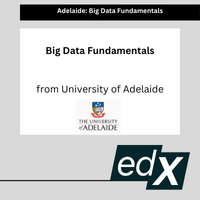
Discovering Cloud Computing
This course will give you the basic information you need to understand the fundamentals of cloud computing, including cloud services and cloud storage.
Reason for Selection: This course provides a clear and practical introduction to cloud computing. It covers essential cloud services, deployment models, and how to leverage cloud platforms for data storage and processing.
Outcome: Participants will understand the basics of cloud computing, including infrastructure as a service (IaaS), platform as a service (PaaS), and software as a service (SaaS). They will learn how to deploy and manage data applications in the cloud, enabling scalable and efficient data processing.
Big Data
Big Data teaches you to build big data systems using an architecture that takes advantage of clustered hardware along with new tools designed specifically to capture and analyze web-scale data. It describes a scalable, easy-to-understand approach to big data systems that can be built and run by a small team. Following a realistic example, this book guides readers through the theory of big data systems, how to implement them in practice, and how to deploy and operate them once they’re built.
Reason for Selection: This book provides an in-depth look at big data principles, best practices, and real-world applications. It covers the Lambda Architecture, a robust framework for building big data systems.
Outcome: Readers will gain a deep understanding of big data architecture and design patterns. They will learn how to build scalable and maintainable big data systems, applying these principles to process and analyze massive datasets effectively.
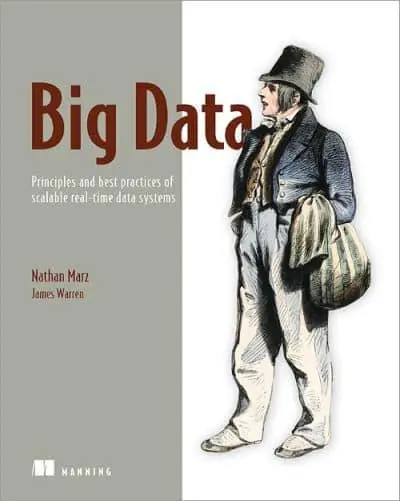
Overall Outcome for Big Data and Cloud Computing: By utilizing these resources, learners will develop a thorough understanding of big data technologies and cloud computing. They will acquire the skills needed to handle and process large datasets, leveraging technologies like Hadoop, Spark, and cloud platforms. This knowledge is crucial for scaling data science solutions, making them applicable and efficient in real-world scenarios.
Step 6: Practical Projects and Portfolio Building
a) Small Projects
Working on small projects is important for applying what you’ve learned, building confidence in your skills, and providing concrete examples to showcase your abilities to potential employers or collaborators.
Recommended Courses:
Python for Data Science and Machine Learning
HarvardX’s Python for Data Science and Machine Learning Professional Certificate. Explore the fastest-growing career field with a certificate in Python for Data Science and Machine LearningThis course will give you the basic information you need to understand the fundamentals of cloud computing, including cloud services and cloud storage.
Reason for Selection: This course provides hands-on experience in using Python for data science and machine learning projects. It covers essential tools and techniques, ensuring that learners can apply their theoretical knowledge to practical scenarios.
Outcome: Learners will build a series of small projects throughout the course, each focusing on different aspects of data science and machine learning. These projects help solidify their understanding and demonstrate their ability to solve real-world problems using Python.
Data Science Projects with Python
Data Science Projects with Python is designed to give you practical guidance on industry-standard data analysis and machine learning tools, by applying them to realistic data problems. You will learn how to use pandas and Matplotlib to critically examine datasets with summary statistics and graphs, and extract the insights you seek to derive. You will build your knowledge as you prepare data using the scikit-learn package and feed it to machine learning algorithms such as regularized logistic regression and random forest.
Reason for Selection: This book offers a project-based approach to learning data science with Python. It includes a variety of projects that cover different stages of data science workflows, from data cleaning to model building and evaluation.
Outcome: Readers will complete multiple small projects, gaining practical experience in applying data science techniques. These projects can be included in their portfolio to showcase their skills to potential employers or collaborators.
Overall Outcome for Small Projects: By utilizing these resources, learners will gain practical experience in applying data science and machine learning concepts through small projects. They will build confidence in their abilities, develop a portfolio of work to demonstrate their skills, and be better prepared to tackle larger, more complex projects in the future. These small projects serve as concrete examples of their expertise and problem-solving capabilities, making them more attractive to potential employers and collaborators.
Recommended Books:
b) Capstone Project
A capstone project allows you to demonstrate your ability to integrate and apply your knowledge to a comprehensive, real-world data science problem, showcasing your skills to potential employers.
Recommended Courses:
Data Science Capstone
To become an expert data scientist you need practice and experience. By completing this capstone project you will get an opportunity to apply the knowledge and skills in R data analysis that you have gained throughout the series. This final project will test your skills in data visualization, probability, inference and modeling, data wrangling, data organization, regression, and machine learning.
Reason for Selection: This course is designed to provide a structured environment where learners can work on a comprehensive project that encompasses all aspects of data science, from data collection and cleaning to analysis and modeling. It often involves real-world datasets and problems provided by industry partners.
Outcome: Learners will undertake a significant data science project that requires them to apply the skills and knowledge they have acquired throughout their studies. By completing this capstone project, they will have a concrete demonstration of their ability to handle complex data science tasks, which they can present to potential employers as proof of their proficiency and readiness for professional challenges.
Overall Outcome for Capstone Project: By completing the Data Science Capstone on edX, learners will integrate and apply their accumulated knowledge to a substantial, real-world problem. This project will showcase their comprehensive skills in data science, including problem formulation, data handling, analysis, and modeling. The capstone project serves as a critical portfolio piece, demonstrating their capability to manage complex data science projects, thereby enhancing their attractiveness to potential employers and collaborators.
Step 7: Continuous Learning and Networking
a) Stay Updated
Staying updated with the latest trends, technologies, and methodologies in data science is crucial for maintaining your competitive edge in this rapidly evolving field.
b) Networking
Building a professional network is important for learning, collaboration, and career advancement, providing opportunities for new insights and job opportunities in the data science field. Participate in online forums, attend webinars, and join local data science meetups
Conclusion
Overall Program Outcome: By the end of the program, learners will have a well-rounded education in data science, from foundational concepts to advanced techniques. They will be able to handle data collection, cleaning, analysis, visualization, and model building. Moreover, they will have practical experience through projects, a portfolio to showcase their skills, and the capability to stay updated and connected in the data science community. This comprehensive training prepares them for successful careers in data science, equipped to tackle real-world challenges and contribute effectively to their organizations.
Becoming a data scientist requires dedication and continuous learning. By following this step-by-step guide and completing the recommended courses, you will build a solid foundation and acquire the skills necessary to succeed in the field of data science.
Remember, the journey to becoming a data scientist is ongoing. Stay updated with the latest trends and technologies, and keep honing your skills through continuous learning and practical application. Good luck!
By optimizing your journey with these structured steps and recommended resources, you can effectively prepare for a successful career in data science.


